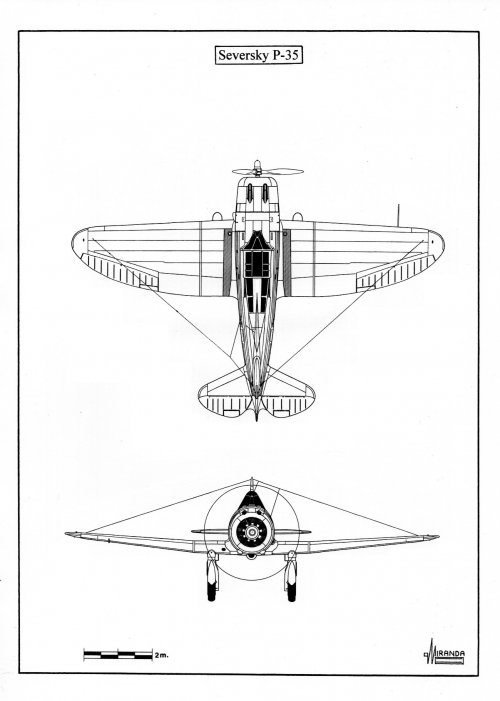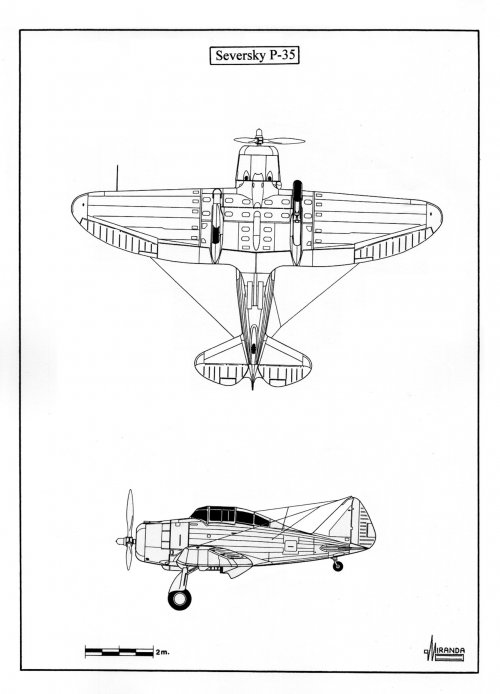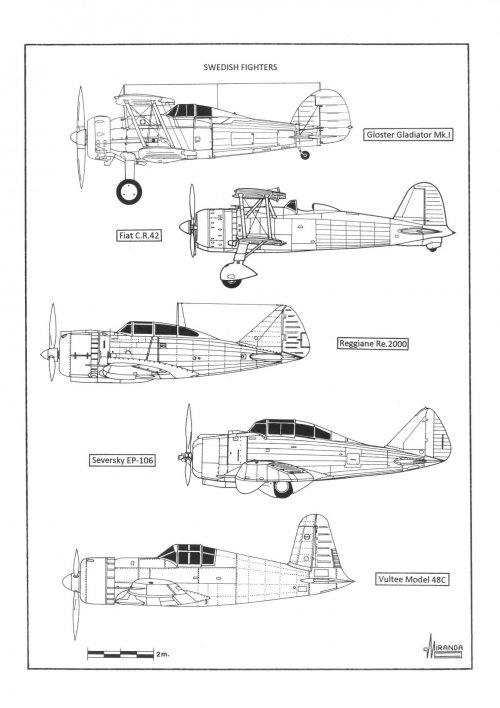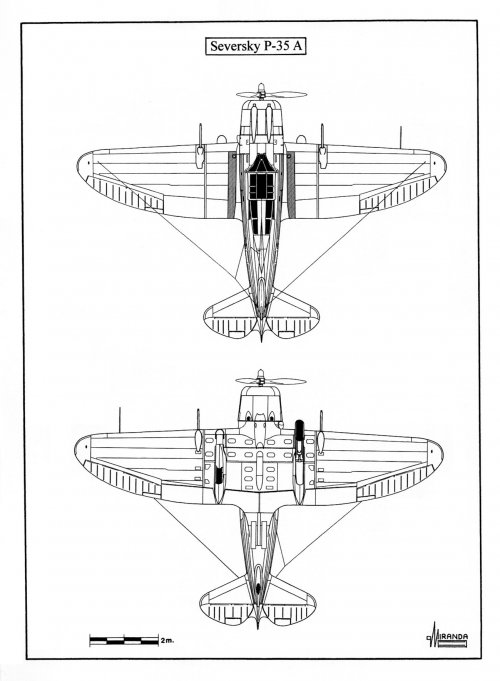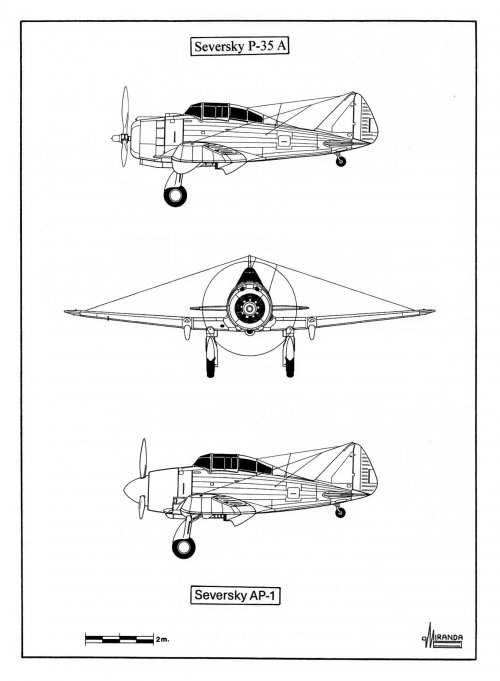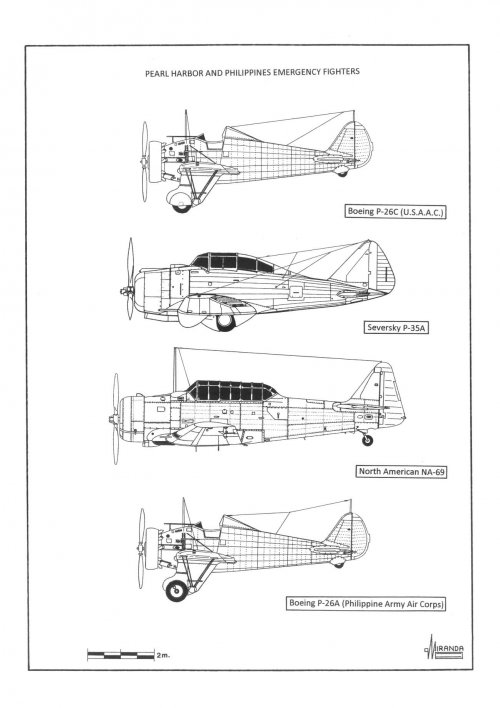I'd like some input on the fictional deployment of several Polikarpov I-17 fighter aircraft to the Spanish Republican Air Force. How do you think that plane would have done against the Condor Legion and Italian monoplanes?
You are using an out of date browser. It may not display this or other websites correctly.
You should upgrade or use an alternative browser.
You should upgrade or use an alternative browser.
Spanish Civil War What-If?
- Thread starter papacavy
- Start date
-
- Tags
- 1930s aéreas de la república española aeronáutica militar aeronáutica naval air forces of the spanish republic alternate history arma de aviación aviación nacional aviazione legionaria bando nacional condor legion ejército nacional del aire fuerza aérea nacional interwar period second spanish republic spanish civil war spanish republican air force what-if
Good question, ChuckI'd like some input on the fictional deployment of several Polikarpov I-17 fighter aircraft to the Spanish Republican Air Force. How do you think that plane would have done against the Condor Legion and Italian monoplanes?
The I-17 was an unsuccessful attempt to use the aerodynamics of the French V-12 engines to improve the I-16's performance. The I-17 did not adapt to Soviet mass production systems and inherited all the problems of the I-16 plus some of its own such as the difficulty of maintaining and cooling the engine in hot climates, longitudinal instability and the weakness of the landing gear retraction cables.
In Spain they would have faced modern German fighters equipped with radio, oxygen, 20-mm cannons and new formation and attack tactics... they would have had no better luck than the Dewoitine D.500.
Last edited:
Dilandu
I'm dissatisfied, which means, I exist.
Problem is, USSR wasn't exactly keen to send its experimental hardware into action. If anything, USSR was over-secretive, preferring that nobody would knew about any of its new weapons before they would be in production. So the idea of "combat testing" would be almost unimaginable - it could even be interpreted as traitorous attempt to disclose military secrets.I'd like some input on the fictional deployment of several Polikarpov I-17 fighter aircraft to the Spanish Republican Air Force. How do you think that plane would have done against the Condor Legion and Italian monoplanes?
That is true, but the design and construction of the I-17 contained no technological secrets that needed to be preserved: the M-100 engine, based on the French V-12s, was already being used in my country in the Tupolev Katiuska bombers and in the two Dewoitines imported from France, the landing gear retraction system, based on that of the Lockheed Altair it was already being used on the I-16, as well as the excellent ShKAS machine guns, the OP-1 Aldiss telescopic gunsight, the Pioneer-Bendix instruments, the Sromberg carburetor and the Scintilla ignition system.
The monocoque system of wood manufacturing was also not a secret.
The aircraft was aesthetically appealing, but so were the MiG-3 and LaGG-3, excellent for modellers and a disaster for the military.
The monocoque system of wood manufacturing was also not a secret.
The aircraft was aesthetically appealing, but so were the MiG-3 and LaGG-3, excellent for modellers and a disaster for the military.
I'd like some input on the fictional deployment of several Polikarpov I-17 fighter aircraft to the Spanish Republican Air Force. How do you think that plane would have done against the Condor Legion and Italian monoplanes?
Good if the 26 Fokker G-1s the Spanish Republic had ordered where deleiverd.
They would have been useful for a few months for use in strafing missions, but the Republic lacked the technical means to keep such a complex heavy fighter in service. Without the possibility of using oxygen equipment, the German Heinkel, Dornier and Junkers fast bombers would continue to carry out missions above four thousand meters without being intercepted.Good if the 26 Fokker G-1s the Spanish Republic had ordered where deleiverd.
Thank you all for the input. This for a possible novel based on Frank Tinkers life and I would like just 2-3 modern foreign fighter planes, like the I-17, to add some "spice" to the story. I am thinking a British or French design smuggled out of the home country into Spain via a shadow company. If not, then I just may have to design my own to compete with the 109s.
Thank you all for the input. This for a possible novel based on Frank Tinkers life and I would like just 2-3 modern foreign fighter planes, like the I-17, to add some "spice" to the story. I am thinking a British or French design smuggled out of the home country into Spain via a shadow company. If not, then I just may have to design my own to compete with the 109s.
There are many possibilities:
In December 1938 there were already two prototypes of the Avia B-35, the Koolhoven FK.55 prototype in May 1937, the Fokker D.XXIII prototype in May 1937, the Renard R.36 prototype in November 1937, the Mureaux 190 prototype was already available in July 1936 and the Potez 230 prototypes, Roussel R.30 in 1939, the Caudron racers C.690, C.710 and C.713, armed with 20-mm guns, were available between 1934 and 1938, and the Payen Pa 110 C.1 was even proposed to the Republicans for manufacture under license in the summer of 1936. The Yugoslavs had two prototypes and twelve Ikarus IK-2 production aircraft built between 1935 and 1939, two Curtiss Hawk 75 H demonstration prototypes were available in China since 1937 and the H-75 O prototype was authorized for export since November 1938, the Northrop XFT prototype suffered an accident in July 1936 and was returned to its manufacturer for restoration, the Northrop 3-A prototype was lost in a flight over the Pacific in July 1935, the Vought V-141 was available for export from March 1936 and the Severksky SEV-1XP prototype from August 1935.
If you are interested in any of these models I can send you additional information.
Good luck with your project.
- Joined
- 22 January 2006
- Messages
- 4,221
- Reaction score
- 2,033
American contemporary fighters weren't a good choice against the Bf 109 in late 30's:
Seversky

 ww2aircraft.net
ww2aircraft.net
Northrop - Vought was an absolute failed design
Seversky

Seversky (Republic) P-35
The Seversky P-35 was a fighter aircraft built in the United States in the late 1930s. A contemporary of the Hawker Hurricane and Messerschmitt Bf 109, the P-35 won the distinction of being the first single-seater ordered by the US Army Air Corps...
Northrop - Vought was an absolute failed design
Seversky P-35
During the thirties, the United States devoted its resources to the construction of modern commercial aircraft powered by air-cooled radial engines, safer and easier to maintain.
In the Spanish Civil War, the fighters powered by radial engines proved that they needed 30 per cent extra power to fight in equal terms with the in-line engine fighters.
The poor production of American military airplanes did not justify the development of a high-performance V-12 powerplant for the first generation of U.S. monoplane fighters.
In April 1935 the Seversky Aircraft Corporation decided to compete against the Curtiss Model 75 to replace the Boeing P-26 currently in service. The SEV-2PX two-seat fighter was modified in single-seat configuration, with a new retractable landing gear and an 850 hp Wright Cyclone engine.
During evaluation testing conducted by the U.S. Army at Wright Field, the SEV-1XP (X-18Y) prototype achieved a top speed 11 mph lower than that required by the specification, and the USAAC awarded a contract to Curtiss to build two hundred fighters under the designation P-36.
However, the Service was impressed by the Seversky prototype and suggested several design changes.
The X-18Y tailfin was modified, the engine was replaced by one Pratt & Whitney R-1830-9, stability was improved by adding several degrees of dihedral of the wing and modifying the wheel fairings and the new plane was proposed to the Army.
As a result, an order for 77 machines (serial numbers 36-354 to 36-429) was placed on June 16, 1936, under the designation P-35.
The new fighter was operated mainly by the 17th, 27th and 94th Squadrons from 1st Pursuit Group based at Selfridge Field, but the type was already obsolete by the time deliveries were finished in 1938.
During the 1940 War Games several aircraft of the 94th PS were camouflaged in Dark Green/Dark Earth paint scheme with Aluminum undersurfaces and black serials.
The main advantage of the P-35 over the P-36 was the extended range obtained thanks to its wet wing. The entire wing structure was coated with a sealant to become a fuel tank, but this innovation was a maintenance nightmare resulting in multiple leaks. It was also difficult to access the engine without disassembling the entire cowling and the mechanics had to work in tight space using mirrors, the undercarriage oleo legs were prone to leaking.
Following the restructuring of the Army Corps in 1940 the P-35 served in the 1st, 31st, 49th, 50th, 52nd and 58th Pursuit Groups and continued to serve until the end of the war in school squadrons.
The last unit was scrapped in April of 1946.
During 1941, the P-35 was painted in USAAC standard camouflage Olive Drab (FS30118), upper surfaces and Neutral Grey (FS36173) undersurfaces with the “U.S. ARMY” legend in black characters and meatball roundels in six positions.
The first production airframe 36-354 (c/n 44) was modified as AP-1 NR-1390 experimental high-speed plane, fitted with special NACA high-inlet-velocity cowling and oversize spinner for wind tunnel test at Langley, it was destroyed in 1938 by hangar fire.
Seversky P-35 technical data
Wingspan: 10.97 m, length: 7.67 m, height: 2.77 m, wing area: 20.43 sq. m, max weight: 2,720 kg, max speed: 452 km/h, range: 1,850 km, service ceiling: 9,700 m, power plant: one 950 hp Pratt & Whitney R-1830-9 air-cooled radial engine driving a Hamilton Standard constant speed propeller, armament: one 0.3-in Browning M2 light machine gun and one 0.5-in Browning M3 heavy machine gun mounted in the engine cowling.
Seversky AP-1 technical data
Wingspan: 10.97 m, length: 7.72 m, height: 2.77 m, wing area: 20.43 sq. m, max weight: 2,720 kg, max speed: 452 km/h, range: 1,850 km, service ceiling: 9,700 m, power plant: one 950 hp Pratt & Whitney R-1830-9 air-cooled radial engine.
Attachments
Seversky EP-1-106
In 1919, the Swedish Army had an aircraft division formed by twelve wars surplus Phönix D.III fighters joined by twenty-four FVM Ö1 Tummelisa advanced trainers in 1921.
Four years later they acquired ten units of the Nieuport-Delage NiD 29 ex-French fighters. The Swedish Air Force (Flygvapnet) was created in 1926, unifying Army and Navy aviation. The new service required the use of two-seat long-range fighters. They acquired fifteen Fokker C. Vd in 1927 and the following year six Heinkel HD 19 seaplane fighters.
The weapons race started by the Soviet Five Years Plan in 1928, prompted the countries close to the U.S.S.R. to modernize their combat aircrafts. After the entry into service of the Polikarpov I-3, in August 1929, Lithuania ordered fifteen Fiat C.R. 20 fighters and Latvia seven Bristol Bulldog Mk. II. In Mach 1930 the prototype of the first Polish monoplane fighter P.W.S.10 flew for the first time and four months later the prototype of the Polikarpov I-5. At that time the VVS already had two-hundred-and-fifty I-3 in service.
In August Sweden ordered three Bristol Bulldog Mk. II and eight Bulldog Mk. IIA (286 km/h) fighters in May 1931. That same year the Swedish Government ordered the construction of 18 units of the indigenous fighter Svenka Aero Jaktfalk. The VVS fighter strength was of three-hundred-and-eighty-nine Polikarpov I-3 and sixty-six I-5 fighters. In 1932 the expansion of the Flygvapnet was planned, with the construction under licence of thirty-six Tiger Moth and twenty-five Tigerschwalbe elementary trainers, joined by ten Sparmann S-1A advanced trainers in 1934.
Between 1936 and 1938, the U.S.S.R. made a demonstration of force by sending to Spain hundred-and-eight Polikarpov I-15, ninety-three Polikarpov I-152, ninety-three Polikarpov I-16 Type 5, sixty-eight Polikarpov I-16 Type 6, hundred-and-twenty-four Polikarpov I-16 Type 10, thirty-one Polikarpov R-5 Army cooperation airplanes, thirty-one Polikarpov R-5 Cht strafers, sixty-two Polikarpov RZ light bombers and ninety-three Tupolev SB-2 medium bombers. They also sent 347 tanks, 60 armoured vehicles, 1,186 cannons, 340 mortars, 20,486 machine guns, 497,813 rifles, 862 million of cartridges, 3.5 million of artillery shells, 10,000 aviation bombs and four torpedo boats.
Lithuania ordered thirteen Dewoitine D.501 L monoplane fighters.
With the publication of the Defence Act in December 1936, the second plan of expansion of the Flygvapnet to five combat wings was started. To equip these units with enough airplanes it was necessary to organize the indigenous production of forty-two Hawker Hart light bombers, eighty Junkers Ju 86 K-1 medium bombers, hundred-and-two Douglas 8 A-1 attack bombers, hundred-and-ninety SAAB 17 dive bombers, eighty-five Focke-Wulf Fw 44 elementary trainers and hundred-and-thirty-six North American NA-16-4M advanced trainers, which should be delivered between 1937 and 1941.
At 1937 the VVS strength was of 8,139 front-line aircraft, including 443 medium and heavy bombers.
The Polikarpov I-152 started fighting in China.
In June, Sweden ordered thirty-seven Gloster Gladiator Mk. I fighters. In 1938 the production of Polikarpov I-153 started and Sweden ordered eighteen Gloster Gladiator Mk. II (414 kph). At the end of that year the Soviet aviation was defeated in Spain thanks to the technological superiority of the Legion Condor.
On May 11,1939, the VVS entered combat against fighters of the Imperial Japanese Army in Khalkin Gol. In September, the Soviets were forced to sign an armistice, overcome by the technical quality of Japanese planes and pilots.
On June 29, the Swedish Government awarded a contract for fifteen fighters
Seversky EP-1-106 (Export Pursuit Nº 1).
After its defeat in Spain, the U.S.S.R. was also forced to sign the German-Soviet non-aggression pact and be satisfied with 'freeing' weaker objectives by occupying eastern Poland when the Polish Army had already been defeated by the Wehrmacht. That same month the ANBO VIII indigenous dive bomber took its first flight in Lithuania and its Government ordered thirteen Morane-Saulnier M.S.406 fighters that the French never delivered because of the war. Nor did the British deliver the Spitfires acquired by Estonia or the Hurricanes acquired by Latvia.
On October 11, Sweden ordered a second batch of forty-five Seversky EP-1-106 fighters. Only two days later, Seversky changed the name to Republic Aviation Corporation.
Despite the losses suffered in Spain, Manchuria and China, the VVS strength was of 7,320 aircraft. In November 30, the Soviets began the invasion of Finland. At that time the Flygvapnet possessed a front-line strength of only 140 aircraft (of which about one half consisted of Hart and Gladiator biplanes) but went to their aid forming the Flygflottilj 19, a volunteer unit with four Hawker Harts and twelve Gladiators equipped with skis.
On January 1, 1940, the Swedish Government ordered a third batch of sixty Seversky EP-1-106 and fifty-two Republic 2PA Guarsman fighter bombers.
Deliveries of EP-1s began on February 2 but only 60 units were sent to Sweden, the remaining 60 fighters (41-17434 to 41-17493) were requisitioned by the USAAC, as Republic P-35A, on October 24, 1940. Also 50 Guarsmans were embargoed and sent to the USAAC, as Republic AT-2 advanced trainers.
On February 6, the Swedish Government also ordered hundred-and-forty-four Vultee Model 48C fighters but, fearing that the airplanes might fall into Soviet hands, the U.S. State Department placed an embargo on the export of military aircraft to Sweden on October 18.
The embargo also included the export of engines, so the Douglas 8 A-1attack bombers had to use the Bristol Pegasus XII, the SAAB 17 used the Bristol Pegasus XXIV and the Piaggio P.XII bis RC 40D and the North American trainers used the Piaggio P. VII RC 16, less powerful and reliable than the original Pratt & Whitney and Wright Whirlwind. The situation derived in panic and the Swedish Government ordered seventy-two Fiat C.R. 42 bis and sixty Reggiane Re.2000 fighters from Italy, as stop-gap solution until the indigenous industry could build their own fighters.
The EP-1 was basically a P-35 with two additional wing mounted machine guns with underwing bulges that held cartridge cases, different instrumentation and radio equipment. The type was delivered without armour, self-sealing fuel tanks or oxygen equipment.
Its fuselage was two feet longer than the P-35 standard, its engine was more powerful, and its nose guns were fitted with aerodynamic fairings.
The EP-1 was designated J-9 in Swedish service, it was in first line throughout WWII and the last machine was retired in 1951.
The sixty aircraft delivered to the Flygvapnet were used by three squadrons (Flygflottilj Nos. 3, 8 and 11) equipped with twenty fighters each.
Each aircraft had the squadron number painted on the fuse and on the tailfin the individual number that was sometimes repeated on the engine cowling.
The first aircraft arrived in Sweden in 1940 unpainted and received large Swedish markings in six positions and black identification numbers.
In 1941, all J-9 fighters camouflaged Dark Green upper surfaces and Pale Blue under surfaces with white identification numbers. The outer wing panels had undersurfaces painted black (port) and white (starboard) for anti-aircraft artillery identification.
Some airplanes from Flygflottilj 8 had upper surfaces camouflaged in sand-mottled Italian style.
In 1944 the identification numbers were replaced by color-coded letters.
Seversky EP-1-106 technical data
Wingspan: 10.97 m, length: 8.28 m, height: 2.97 m, wing area: 20.43 sq. m, max weight: 2,775 kg, max speed: 452 km/h, range: 950 km, service ceiling: 9,570 m, power plant: one 1,050 hp Pratt & Whitney R-1830-45 air-cooled radial engine driving a Hamilton Standard constant speed propeller, armament: two KSP M/22 7.9-mm light machine guns mounted in the cowl and two AKAN M-39 13.2-mm heavy machine guns mounted in the wings.
Attachments
Seversky P-35A
In February 1941, forty-five Seversky EP-1-106 fighters were transferred to the U.S. Far East Air Force, under the name P-35A, and re-armed to American standards with Browning machine guns to bolster the air defences of the Philippine Islands. These planes arrived at Clark Field with Swedish instruments and cockpit placards. Their maintenance was complicated by the absence of replacement engines and by flying user guides written in Swedish.
The P-35As were assigned initially to the Squadrons Nos. 17 PS and 20 PS of 4th Composite Group, based at Nichols Field and Del Carmen Field. Ten aircraft were destroyed in accidents before the Pacific War started.
Ten hours after the attack on Pearl Harbour, 107 Japanese naval bombers, escorted by 84 Zeros from Taiwan, carried out a devastating attack on Clark and Iba airfields, in the Island of Luzon. The bombing and subsequent strafing caused the destruction of nearly half of U.S. Far East Air Force, including fifteen Curtiss P-40E fighters and twelve Boeing B-17E heavy bombers.
The attackers were twenty-seven Mitsubishi G3M Nell and twenty-six Mitsubishi G4M Betty medium bombers, from Takao and Kanoya Kokutais, together with forty-two Mitsubishi A6M2 Zero-Sen from Tainan Kokutai. Prewar tactics as three-man “V” formations proved suicidal against the Zero fighter that could outclimb and outmanoeuvre the P-35A but also was faster and more heavily armed.
The Japanese planes were tracked by the radar station at Iba, and 18 fighters took off to intercept them, believing that they were heading to Manila. During the attack to Clark Field the control centre was destroyed, causing the complete breakdown of communications with other bases. American fighter patrols often failed to contact the enemy because they were directed to wrong place.
On December 7, 1941, the Far East Air Force had twenty-four P-35A in flying condition: six in the 21st Pursuit Squadron and eighteen in the 34th PS.
When the P-40Es from 3rd Squadron returned to Iba for refuelling, they found that the base was being attacked by fifty-four Bettys from Takao Kokutai and forty-two Mitsubishi A6M2 Zero-Sen that shot down five American fighters. At the same time, fifteen Nakajima B5N2 Kate bombers, escorted by three Mitsubishi A5M4 Claude fighters from IJN Ryujo carrier, attacked the naval bases at Davao and Mindanao destroying two PBY seaplanes.
The defence of the Philippines consisted of eighteen P-40E from 3rd Sqn, based at Iba Field, eighteen P-40E from 20th Sqn, based at Clark Field, eighteen P-40E, six P-35A and ten NA-69 from 17th Sqn, based at Nichols Field, eighteen P-40B from 21st Sqn, based at Nichols Field, eighteen P-35A from 39th Sqn, based at Del Carmen Field, and fourteen P-26A and two P-12E, from 6th Sqn of Philippine Army Air Corps, based at Batangas Field. Fuel, ammunition and spare parts were in short supply and air warning were so poor that the airfields were taken by surprise.
The first combat occurred on 8 December between 16 American P-35A and P-40 fighters of the 21st PS, based at Clark Field and Japanese Ki.21-type bombers, three of them shot down by the Seversky’s.
Two days later, 16 aircraft of the 34th PS attacked the Japanese invasion fleet, during the combat two American aircraft were destroyed, when the squadron returned to its base, Del Carmen Field was being attacked by Japanese fighters who managed to destroy twelve Seversky’s and damage six others.
Only a dozen P-35As remained operational by the fourth day of the war and were relegated to reconnaissance, strafing and evacuation missions.
The fighters that survived the first attack were reserved for reconnaissance tasks, but on 13 and 16 December were forced to combat, suffering new losses. Eight days later only sixteen P-40 were serviceable on Bataan airfields. On January 17, 1942, there were only seven, on February 14, only four and only two by March. On 20 and 25 December 1941, the IJN Ryujo carrier supported the landings at Davao City and Jolo with sixteen Kates and twenty-two Claudes.
The involvement of the IJA during the first days of the invasion was limited by the short range of the ninety Nakajima Ki.27b fighters of the 4th, 24th and 50th Sentais, based in Taiwan, as they just provided air cover for amphibious assault forces operating to the North of 16-degrees latitude.
During the combats on December 10, twelve aircraft were destroyed and six damaged by the Zeros. Two days later only eight were left in flying condition, five in January 1942 and just one in May. The P-35A turned out to be inferior to the Zeros during dog fight and it was therefore mainly used on strafing missions.
On December 12, the 24th and 50th Sentais, with eighteen aircraft each, were based in Vigan and Aparri airfields, located in the North of Luzon Island. And the 27th Sentai was moved to Del Carmen airfield to support the offensive of Bataan escorting the Mitsubishi Ki.51 Sonia dive bombers.
On December 24, the five surviving planes attacked Japanese landings at Lamon Bay.
On January 23, 1942, there were still two P-35As in combat condition.
On March 23 and 3 April, these two aircraft were used for evacuations at Negros Island and Bataan, the Seversky being able to carry two passengers inside the rear fuselage.
On April 29, the last survivor attacked with two 50 kg bombs Japanese landings at Mojacar Bay, and it was destroyed on May 3.
The fifteen planes that remained in America were redesignated as RP-35A and assigned to training units.
P-35A Technical Data
Wingspan: 10.97 m, length: 8.17 m, height: 2.97 m; wing area: 19.8 sq. m, max weight: 2,775 kg, max speed: 452 kph, range: 1,529 km; power plant: one 1,050 hp Pratt & Whitney R-1830-45 air-cooled radial engine, armament: two Browning M2 0.3-in machine guns in the cowl and two Browning M3 0.5-in heavy machine guns in the wings.
Attachments
royabulgaf
ACCESS: Top Secret
- Joined
- 29 December 2008
- Messages
- 679
- Reaction score
- 353
The Spanish Republic did not have the luxury of good choices. They had to take what they could get.American contemporary fighters weren't a good choice against the Bf 109 in late 30's:
Seversky

Seversky (Republic) P-35
The Seversky P-35 was a fighter aircraft built in the United States in the late 1930s. A contemporary of the Hawker Hurricane and Messerschmitt Bf 109, the P-35 won the distinction of being the first single-seater ordered by the US Army Air Corps...ww2aircraft.net
Northrop - Vought was an absolute failed design
The international community, horrified by the revolutionary excesses of the pro-Soviet government, decided to prevent the sale of arms to Spain through the Non-Intervention Committee, but the agreements were violated through Mexico and Estonia.
Early 1937 the government of Estonia sold seven Bristol Bulldog Mk. II and eight Potez 25 A.2 to Spain through a Czech import company, to circumvent the arms embargo imposed by the Non-Intervention Committee. The operation turned out to be very lucrative and Estonia decided to act as an intermediary in the sale of 26 Fokker G.I heavy fighters, two Fokker C.X light bombers, two Fokker D.XXI monoplane fighters and seven Letov S.231 biplane fighters to the Spanish communists.
On 8 July 1937, after Hendon Air Show, the Estonian Military Purchasing Committee placed an order for twelve Supermarine Spitfire Mk. I with the money obtained from the illegal arms trade. The price of a Spitfire of the time was equivalent to 40 per cent of the annual budget of Estonia. The Spitfires were to be delivered between July 1939 and June 1940, but the British cancelled the operation 12 days after the German attack to Poland.
Early 1937 the government of Estonia sold seven Bristol Bulldog Mk. II and eight Potez 25 A.2 to Spain through a Czech import company, to circumvent the arms embargo imposed by the Non-Intervention Committee. The operation turned out to be very lucrative and Estonia decided to act as an intermediary in the sale of 26 Fokker G.I heavy fighters, two Fokker C.X light bombers, two Fokker D.XXI monoplane fighters and seven Letov S.231 biplane fighters to the Spanish communists.
On 8 July 1937, after Hendon Air Show, the Estonian Military Purchasing Committee placed an order for twelve Supermarine Spitfire Mk. I with the money obtained from the illegal arms trade. The price of a Spitfire of the time was equivalent to 40 per cent of the annual budget of Estonia. The Spitfires were to be delivered between July 1939 and June 1940, but the British cancelled the operation 12 days after the German attack to Poland.
Similar threads
-
-
Request for a Book about Armoured Vehicles of the Spanish Civil War
- Started by lucamax
- Replies: 0
-
-
Construcciones Aeronáuticas SA (CASA) - Spanish Designations
- Started by Cy-27
- Replies: 21

